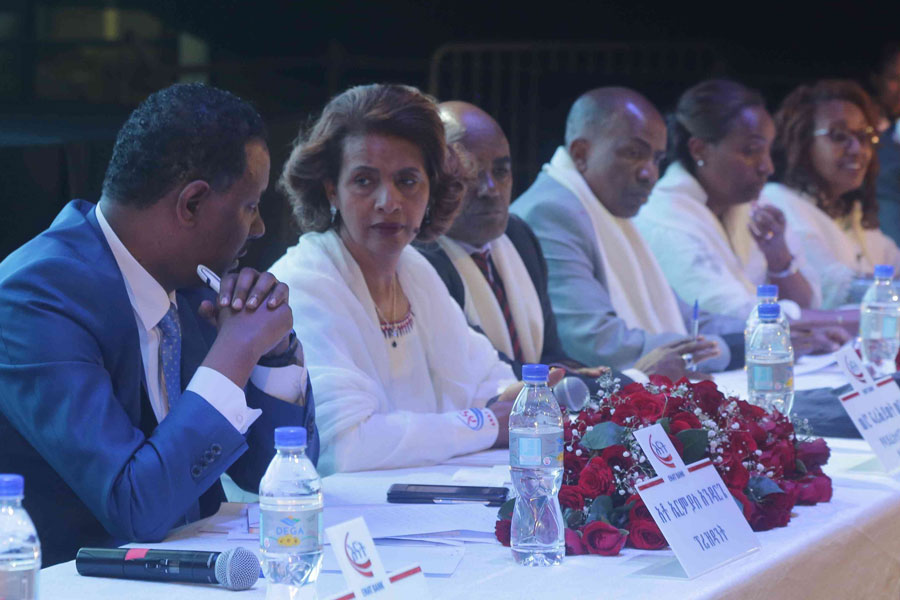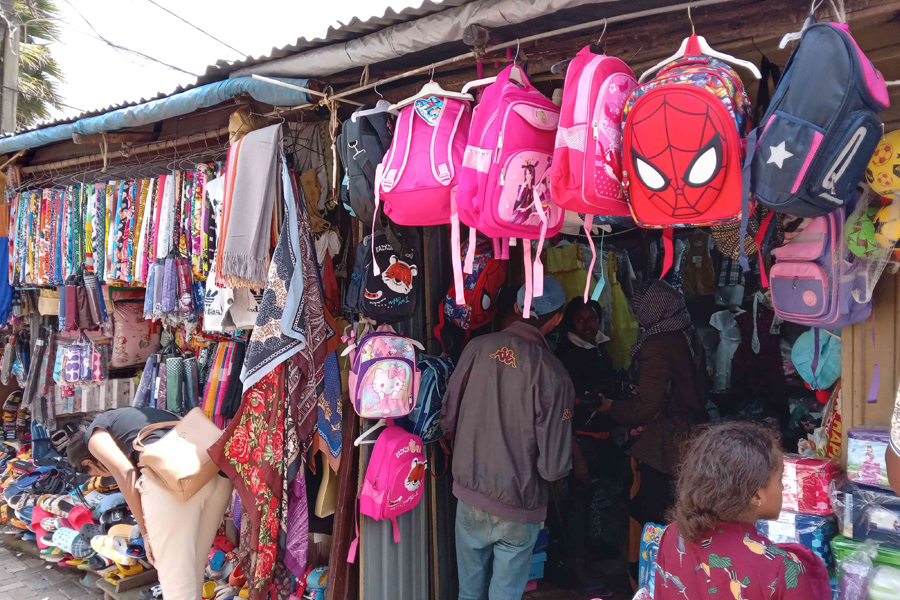
Some movies require a specific mood and environment for watching.
Sometimes, we want a movie to not be too complicated, but easy to understand, the sort where the story takes the audience on a fun and quirky journey. At the same time, it should not insult our intelligence. Fun is good, but the cost of a movie ticket — a cool 100 Br these days — should be justified somehow. We deserve more than someone slipping on a banana peel for our money’s worth.
Shadow in the Clouds is that compromise. It is a movie about an American soldier attempting to smuggle her baby but while trapped in a warplane turret and being harassed by sexist British soldiers. All the while, she fights Japanese fighter planes and the strange monsters that appear on the bottom of the aircraft as they travel over New Zealand.
The film stars Chloe Grace Moretz as Maude, a flight officer with a top-secret mission. She is to board the bomber plane, named "The Fool’s Errand," to deliver documents no one is allowed to see. Inside, she meets British officers dumbfounded at seeing a "broad" onboard. Since there is no place for her to sit, she is told to make herself cosy in the turret.
It is in this confined place that the best scenes of the movie take place. The camera does not leave the space for the better part of the first and second acts. It stays with her, sometimes intercut with images of the men as she imagines them talking to her through the radio.
The scenes in the turret can be read symbolically. Starting from her sighting of a monster — "gremlin" — at the bottom of the plane, which she relays to the other male officers, she also spots a Japanese fighter plane close by.
In both instances, they discount what she has seen out of hand. This is an allegory in how women's lived experiences are discounted without so much as a thought. Soon enough, in the plane, the male officers begin to suggest that the confined space is getting to her, that she is delusional. The fact that the fighter plane does appear and is later shot down by her from the turret does not change their attitudes.
In fact, all the turret scenes could be symbolic of psychological isolation in a patriarchal world. Her perspective is denied a platform - as when they disconnect her from the radio - and her story is challenged due to her position as a woman.
The turret scene does not last the entire movie. But it is after this that the film stops being a thriller. It mutates into a full-blown action movie, where the male soldiers are no longer the foe, but a gremlin that taunts them until they have to learn to fight it together.
Somewhere in the movie, it is revealed that Maude has brought a baby with her. Although unexplored by the disappointing, rather cartoonish, third act, it adds to the movie's theme.
Perhaps the whole movie is a metaphor for being a mother out of wedlock. The constant lies, as when she has to pretend she is carrying with her a top-secret document, not a baby, just to get a plane ride; the social ostracisation, as when she is made to stay in the turret; the constant taunting as sexually promiscuous; the lack of understanding and compassion; and finally, being left alone to protect her baby from whatever the world throws at her, as when she has to fight off a monster all by herself.
The film is no Thelma and Lewis. But for a monster movie, it is as close to being an allegory on gender relations as one can get.
PUBLISHED ON
Jan 23,2021 [ VOL
21 , NO
1082]

Viewpoints | Jul 01,2023

Viewpoints | Jun 29,2019

Viewpoints | Apr 06,2024

Fortune News | Nov 15,2018

Fortune News | Mar 06,2021

Fortune News | Oct 13, 2024

Commentaries | Oct 21,2023

Fortune News | Apr 10,2023

Agenda | Sep 16,2023

Editorial | Jul 25,2020

My Opinion | 132151 Views | Aug 14,2021

My Opinion | 128561 Views | Aug 21,2021

My Opinion | 126482 Views | Sep 10,2021

My Opinion | 124091 Views | Aug 07,2021

Jul 12 , 2025
Political leaders and their policy advisors often promise great leaps forward, yet th...

Jul 5 , 2025
Six years ago, Ethiopia was the darling of international liberal commentators. A year...

Jun 28 , 2025
Meseret Damtie, the assertive auditor general, has never been shy about naming names...

Jun 21 , 2025
A well-worn adage says, “Budget is not destiny, but it is direction.” Examining t...

Jul 13 , 2025 . By YITBAREK GETACHEW
The Addis Abeba City Revenue Bureau has introduced a new directive set to reshape how...

Jul 13 , 2025 . By BEZAWIT HULUAGER
Addis Abeba has approved a record 350 billion Br budget for the 2025/26 fiscal year,...

Jul 13 , 2025 . By RUTH BERHANU
The Addis Abeba Revenue Bureau has scrapped a value-added tax (VAT) on unprocessed ve...

Jul 13 , 2025 . By NAHOM AYELE
Federal lawmakers have finally brought closure to a protracted and contentious tax de...